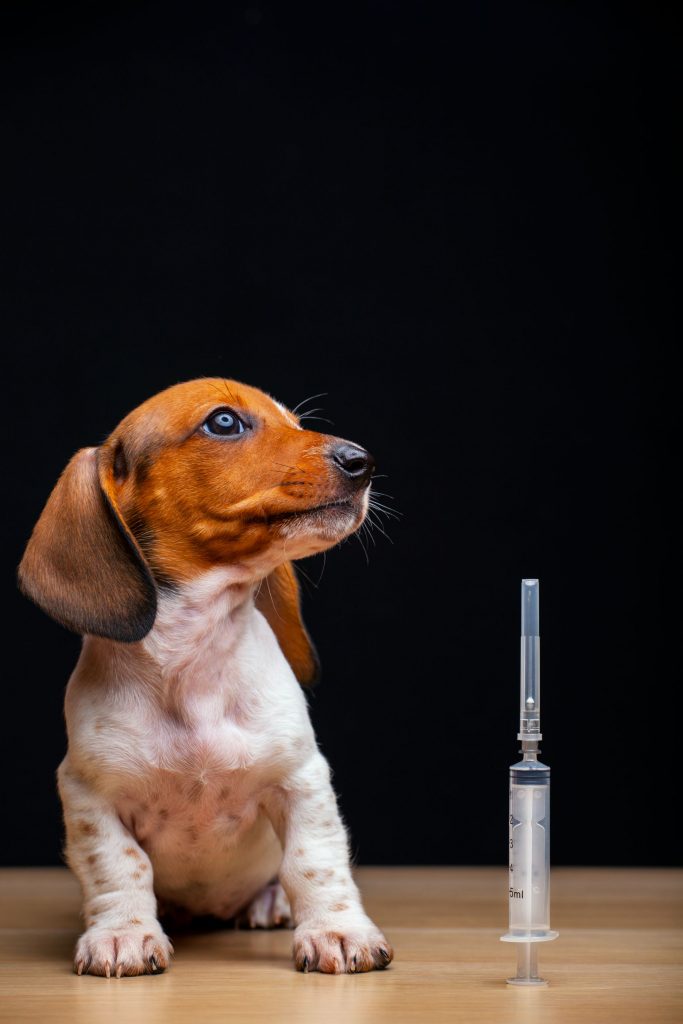A Guide to Diabetes in Dogs

In some ways animals and humans are very similar. Unfortunately, this means they are affected by many of the same disease processes that humans face. One of these shared experiences is the development of diabetes mellitus. About 1 in 500 pets is affected by diabetes. So what do you need to know about diabetes in dogs? Keep reading to learn about how this disease affects our pets and how to recognize it.
Diabetes Basics
Diabetes mellitus is the most common form of diabetes in pets. It is the impairment of the body’s ability to produce and/or utilize insulin, a hormone secreted by the pancreas. Insulin facilitates the absorption of carbohydrates (glucose) into the body’s cells to be utilized as energy.
In some animals, the body simply does not produce enough of its own insulin. In others, the body produces insulin, but the cells are unable to respond to it properly.
When the body cannot absorb glucose into the cells, the cells do not have adequate energy to function and begin to look for energy from other sources. The glucose also remains in the bloodstream, which results in further issues.
Symptoms of Diabetes in Dogs
When a pet develops diabetes, there are several symptoms that owners may notice. They occur due to the buildup of glucose in the blood caused by its lack of absorption by the body’s cells.
Symptoms of diabetes in dogs often include:
- A large increase in thirst
- Increase in urination
- Increase in appetite
- Weight loss despite a very good appetite
- Urinary tract infections
- The development of cataracts
Other diseases can have similar symptoms to diabetes. It is important to have your pet examined right away if he or she is exhibiting any of these symptoms.
Diabetes in pets needs to be treated in order to avoid serious progression of disease.
At Dupont Veterinary Clinic, we are often able to diagnose diabetes in dogs utilizing diagnostics such as blood and urine testing. An efficient diagnosis allows us to get right to work treating your pet.
Treating Pet Diabetes
Once diabetes is diagnosed, it is important to get started with treatment as soon as possible. Luckily, most animals respond very well to treatment and our veterinarians and staff are more than qualified to help guide you through the diagnosis.
Diabetes is not curable, but a multifaceted approach to management helps to ensure that a diagnosed pet feels better and lives a mostly normal life. The pet owner’s effort is so important in the management of diabetes, and working together brings the best possible outcomes.
The successful treatment of diabetes in dogs involves:
- Dietary changes–Dogs with diabetes tend to do best with a specially formulated diet. Diabetic dog foods are made to help minimize blood sugar spikes and to help maintain a healthy body weight. Your pet’s veterinarian may recommend a specific, often prescription diet, for your pet’s needs.
- Insulin therapy–The treatment of diabetes in pets does require the aid of insulin injections daily. While many pet owners are intimidated by this at first, diabetic pets and their owners are quite successful in most situations.
- Home monitoring–Keeping track of your pet’s behavior, eating habits, bathroom habits, and drinking can be extremely helpful in better managing diabetes. Monitoring blood glucose levels at home is also helpful in some situations.
- Veterinary visits–Especially at the onset of treatment, you may feel like you need a frequent flier card for your pet at our clinic. Until the best management strategy and insulin dose is determined for your pet, it will be important that we see your pet often.
Most diabetic pets go on to live long and healthy lives, and we are happy to be a part of that. We are here to help you and your four-legged family members no matter what life throws at you, diabetes included.
